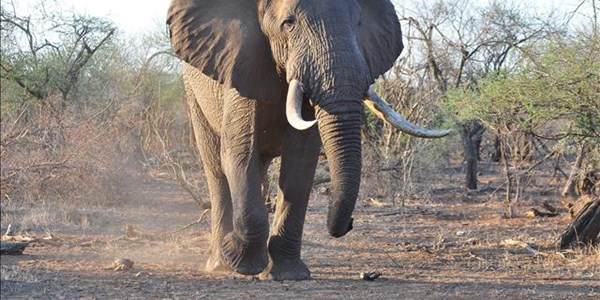National
African elephants under threat as poaching worsens, says UN Office on Drugs and Crime─── 05:22 Thu, 26 May 2016

In its World Wildlife Crime Report 2016, released in New York on May 24, UNODC said the status, scarcity and difficulty of obtaining ivory as a strictly controlled product had made it a gift of choice for the rich and the politically connected who sought it for prestigious reasons.
“Some wildlife products have attained such status and scarcity that their value has become detached from any practical uses they had historically. Today they have taken on a role as value stores, hedges against the vagaries of interest and exchange rates in emerging markets. Evidence that raw ivory has become the object of speculation comes from several sources.
“Most broadly, it is difficult to reconcile what is known about supply with what is known about demand. No charted ivory retail market, licit or illicit, can explain the scale of poaching and trafficking that has taken place in recent years. This suggests there may be some additional reason, other than immediate use, to acquire ivory and speculation remains one possibility,” the report said.
In a case study focused on the illegal trade in African elephant ivory, the report said an estimated 500 000 elephants remain in 37 African states, although over 60% are found in Botswana, Tanzania, and Zimbabwe. The East African region has reportedly lost more elephants to poaching in the past three decades than the Southern and Central regions.
“Several sources of data suggest that Eastern Africa, and the United Republic of Tanzania in particular, has actually lost the most elephants in recent years. For example, based on elephant population surveys, the estimated probable number of elephants in the United Republic of Tanzania decreased from 136 753 in 2007 to 63 624 in 2013, a decline of over 50%, primarily resulting from losses in the Selous Game Reserve.
“Taking into account natural population growth during that time period, over 100 000 elephants appear to have been lost between 2007 and 2013. If so, the United Republic of Tanzania alone could have been the source of over 100 metric tons of illegal ivory annually for the past seven years. Based on DNA samples taken from a number of large ivory seizures, it appears Tanzania’s Selous Mikumi/Niassa Ecosystem (until 2013) and the Ruaha Rungwa Ecosystem (from 2013) have been the main sources of ivory trafficked internationally in recent years,” the report stated.
Further, the report noted that ivory had gone missing from African government stockpiles in the past, which points to a high likelihood that the stockpiles could be a significant source of contraband which was traded illegally. The report said the perpetrators of poaching crime ranged from opportunists to dedicated poachers.
“For example, recent field research by UNODC in the Central African Republic has found at least three distinct groups who might target the elephant population: local subsistence hunters, pastoralists from Sudan whose seasonal migration leads them through the region and professional Sudanese poachers with a long lineage of dealing in ivory.
“Beyond these categories, the groups of experts assembled to guide the United Nations Security Council in monitoring sanctions have emphasised the role of the security forces of several African countries in poaching activities. Media have also reported incidents where game rangers, charged with protecting wildlife populations, were found to be active in poaching,” the report concluded.
Among other highlights, the report noted that South Africa, Kenya, Zimbabwe and Namibia were losing more rhinos annually to poaching amid government failures in coming up with effective counter-poaching strategies. The report said there was no clarity on the alleged close links between poaching and insurgency as available evidence showed that more elephants were being poached in Southern African countries, which are at peace, than the war-ravaged countries of East and Central Africa.
“Although frequently alleged, the relationship between ivory poaching and insurgent groups is far less clear. While rebels commonly support themselves by extracting resources in the areas they control, most of the insurgent groups active today are operating in elephant-poor areas, depleted, in part, due to years of conflict.
“If insurgent poachers managed to kill all of the estimated 20 000 elephants in the countries where they are active, this would represent 4% of the African elephant population, and would earn them collectively between about US$10 million and US$40 million for that year. At present, it is unlikely that poaching by armed groups threatens large elephants populations or constitutes a major source of threat finance. Most of the ivory supply appears to be coming from countries at peace,” the report concluded.
In Africa, there are 43 elephant range states which are at peace while only 11 are presently faced with insurgency and other forms of armed rebellion. The report called for shared responsibility in tackling wildlife crime, noting that products made from illicit flora and fauna such as fashion items, furniture, food and pets were often ‘hidden’ in plain sight.
ANA- Download the OFM app in the Apple or Android app store to read the latest news/sports stories.














